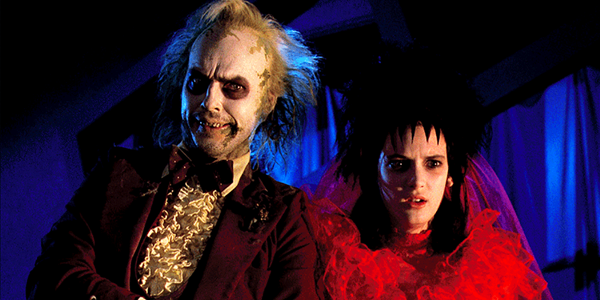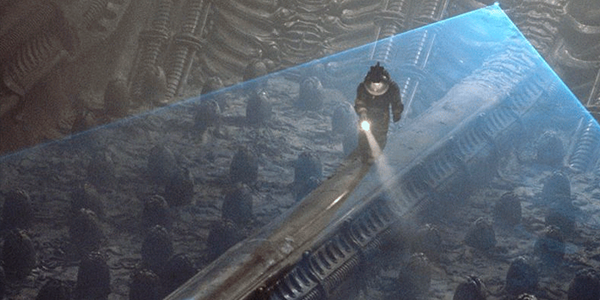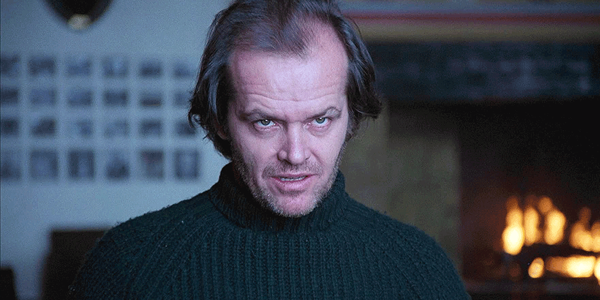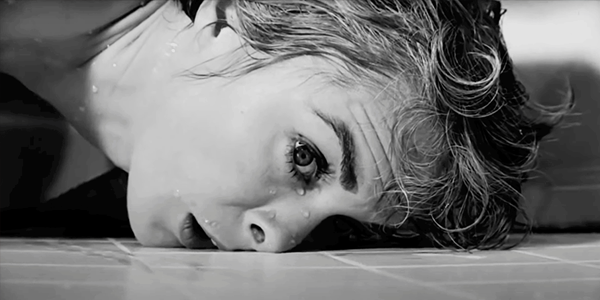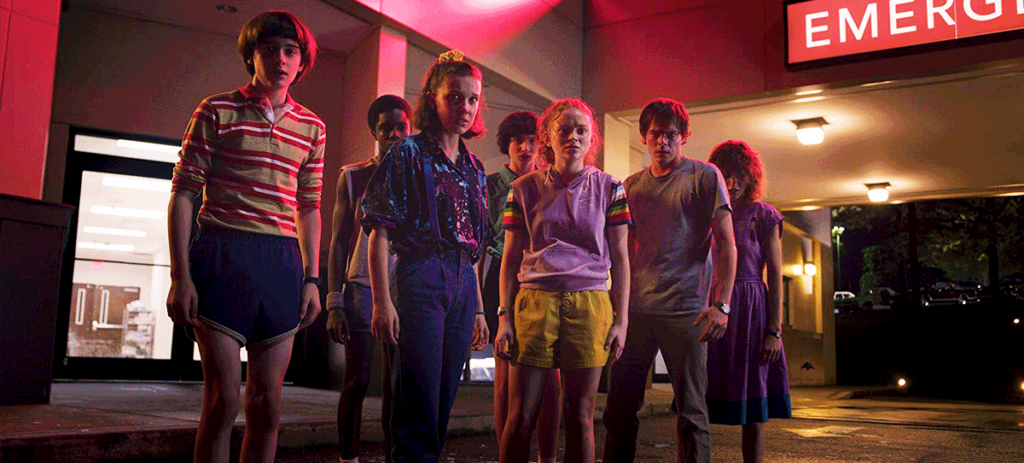
review | Stranger Things 3
Season 3 goes for the gruesome, balancing the horror by taking the series’ first stab at zany
by Dennis Burger
July 8, 2019
Stranger Things 3 is such a tonal, structural, and narrative departure from what’s come before that it can take hardcore fans of the series (raises hand unapologetically) a few episodes to get into this year’s batch of eight episodes. That’s not to say there’s anything wrong with the first couple episodes. In fact, the show’s creators—collectively known as the Duffer Brothers—demonstrate time and again their ability to lovingly mash up, remix, riff on, and reassemble 1980s pop culture in new and inventive ways. It’s simply that this time around, they’re being a little cheeky about it.
There’s a poolside scene in the first episode, for example, in which they nab the Cars’ “Moving in Stereo” from Fast Times at Ridgemont High, and it’s played in such a way that you can’t help but anticipate exactly what’s coming if you know that film. That anticipation is hilariously subverted, though, setting the stage for a new season that is, at times, something Stranger Things has never really been before: Zany.
Get a few episodes in to Stranger Things 3 and the reason for this starts to become clear. While leaning hard on all the influences that have made the show so beloved to date—Stephen King, Steven Spielberg, Robert Zemeckis, Richard Donner, Joe Dante, Tobe Hooper, Rob Reiner, and all the other giants of genre and coming-of-age fiction from that era—the Duffers also start to bring other, darker influences to the forefront, like early-’80s Sam Raimi and mid-80s David Cronenberg. As such, things can get a little more gruesome this time around.
To balance that, the creators introduce a lot more levity. They’ve mentioned Fletch as a big inspiration for Stranger Things 3, and indeed, elements of the Chevy Chase screwball comedy can be seen in the side-quest of Hopper (the show’s irritable chief of police) and Joyce (the mother of Mike, the unfortunate victim of Stranger Things and Stranger Things 2).
Add to that some unlikely influences such as Spies Like Us and Red Dawn (the latter of which is ribbed more than revered here), and you’ve got a weird and wonderful pastiche that, on paper at least, seems like it would struggle to hold itself together. But hold together it does. Whether it’s tweaking mall culture, reliving the Cold War tensions between the U.S. and U.S.S.R, or once again bringing a Dungeons & Dragons campaign to life in the creepiest of ways, Stranger Things 3 succeeds primarily because it’s not merely a gimmicky nostalgia romp—it’s a legitimate love letter to a bygone era.
As a result of that, some of its tropes may feel a little dated. The show isn’t interested in shades of grey: There are good guys and there are bad guys. And the bad guys are bad because they’re dirty commies hellbent on world destruction or something. Why are they hellbent on world destruction or something? Because they’re the bad guys. Duh.
But none of the above matters so much as the show’s amazing cast, which features a few new additions this year. Cary Elwes positively chews the scenery as the corrupt mayor of Hawkins, Indiana, whose shady political dealings allowed for the construction of the Russian-financed mall that serves as a front for the nefarious Soviet experiment at the heart of this season. And Maya Hawke (daughter of Uma Thurman and Ethan Hawke) absolutely shines as the misfit mall employee who helps crack the case at the heart of Stranger Things 3. But the original cast, including the impossibly talented Millie Bobby Brown, is still the emotional heart of the show, and it’s their relationships, their emotional ups and downs, their successes and failures that keep us coming back.
Another thing that makes Stranger Things 3 such a fun and effective followup to the first two is that, despite all of its shake-ups in terms of tone, structure, and inspiration, there’s an undeniable through-line in the look of the show. The aesthetic is, unsurprisingly, 1980s through and through, and while capturing that look doesn’t leave a lot of room for super-vivid imagery, the 4K presentation relies heavily on HDR to add depth and texture to the shadows. There’s some nice use of spectacular (though not really eye-reactive) highlights from time to time, but most of the dynamic range is reserved for the lower end of the value scale. As such, you’ll definitely benefit from watching on a display that can handle the distinction between black and oh-so-very-nearly black.
The 5.1-channel soundtrack also deserves to be experienced on the highest-quality surround sound system possible. That shouldn’t be a surprise, given that Stranger Things 2 was the impetus behind Netflix’s new adaptive studio-quality sound technology. Still, it’s a little shocking just how effective—indeed, aggressive—the mix is this time around. I don’t think my subwoofer has gotten such a raucous workout since Scott Pilgrim vs. the World, and the surround channels are pushed to their extremes in all the right places, especially in remixing the gloriously nostalgic soundtrack.
My only beef is that Netflix doesn’t give us any bonus features for Stranger Things 3. While another season of Beyond Stranger Things would have been ideal, any sort of extra goodies would have been appreciated.
Thankfully, the show stands on its own as a binge-worthy romp, especially for those of us who grew up in the era being mythologized. And for what it’s worth, there’s one tiny extra worth mentioning: If you’re the type to hit the stop button as soon as the ending credits start rolling, be sure to stick around past the end of the final episode. There’s a mid-credits sequence that sets the stage for Stranger Things 4, which by all accounts will likely be the show’s swan song.
Dennis Burger is an avid Star Wars scholar, Tolkien fanatic, and Corvette enthusiast who somehow also manages to find time for technological passions including high-end audio, home automation, and video gaming. He lives in the armpit of Alabama with his wife Bethany and their four-legged child Bruno, a 75-pound American Staffordshire Terrier who thinks he’s a Pomeranian.
PICTURE | Capturing the look of the 1980s doesn’t leave a lot of room for super-vivid imagery, so the 4K presentation relies heavily on HDR to add depth and texture to the shadows
SOUND | It’s a little shocking just how aggressive the mix is this time around. The surround channels are pushed to their extremes in all the right places, especially in remixing the gloriously nostalgic soundtrack.
© 2025 Cineluxe LLC


